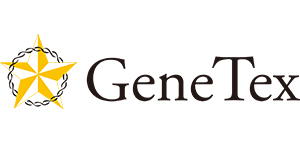PSMD2 antibody, C-term
PSMD2 antibody, C-term
Artikelnummer
GTX89633-100
Verpackungseinheit
100 μg
Hersteller
GeneTex
Verfügbarkeit:
wird geladen...
Preis wird geladen...
Application Note: WB: 0.03-0.3μg/ml. *Optimal dilutions/concentrations should be determined by the researcher.Not tested in other applications.
Calculated MW: 100
Positive Control: The peptide used to generate this antibody is available for purchase (GTX89633-PEP).
Form: Liquid
Buffer (with preservative): TBS, 0.5% BSA, 0.02% Sodium azide.
Concentration: 0.50 mg/ml (Please refer to the vial label for the specific concentration.)
Background: The 26S proteasome is a multicatalytic proteinase complex with a highly ordered structure composed of 2 complexes, a 20S core and a 19S regulator. The 20S core is composed of 4 rings of 28 non-identical subunits; 2 rings are composed of 7 alpha subunits and 2 rings are composed of 7 beta subunits. The 19S regulator is composed of a base, which contains 6 ATPase subunits and 2 non-ATPase subunits, and a lid, which contains up to 10 non-ATPase subunits. Proteasomes are distributed throughout eukaryotic cells at a high concentration and cleave peptides in an ATP/ubiquitin-dependent process in a non-lysosomal pathway. An essential function of a modified proteasome, the immunoproteasome, is the processing of class I MHC peptides. This gene encodes one of the non-ATPase subunits of the 19S regulator lid. In addition to participation in proteasome function, this subunit may also participate in the TNF signalling pathway since it interacts with the tumor necrosis factor type 1 receptor. A pseudogene has been identified on chromosome 1. Alternative splicing results in multiple transcript variants of this gene. [provided by RefSeq, Jul 2013]
Uniprot ID: Q13200
Antigen Species: Human
Immunogen: Peptide with sequence C-VILRKNPNYDL, from the C Terminus of the protein sequence according to NP_002799.3.
Purification: Purified by ammonium sulphate precipitation followed by antigen affinity chromatography
Conjugation: Unconjugated
Full Name: proteasome 26S subunit, non-ATPase 2
Calculated MW: 100
Positive Control: The peptide used to generate this antibody is available for purchase (GTX89633-PEP).
Form: Liquid
Buffer (with preservative): TBS, 0.5% BSA, 0.02% Sodium azide.
Concentration: 0.50 mg/ml (Please refer to the vial label for the specific concentration.)
Background: The 26S proteasome is a multicatalytic proteinase complex with a highly ordered structure composed of 2 complexes, a 20S core and a 19S regulator. The 20S core is composed of 4 rings of 28 non-identical subunits; 2 rings are composed of 7 alpha subunits and 2 rings are composed of 7 beta subunits. The 19S regulator is composed of a base, which contains 6 ATPase subunits and 2 non-ATPase subunits, and a lid, which contains up to 10 non-ATPase subunits. Proteasomes are distributed throughout eukaryotic cells at a high concentration and cleave peptides in an ATP/ubiquitin-dependent process in a non-lysosomal pathway. An essential function of a modified proteasome, the immunoproteasome, is the processing of class I MHC peptides. This gene encodes one of the non-ATPase subunits of the 19S regulator lid. In addition to participation in proteasome function, this subunit may also participate in the TNF signalling pathway since it interacts with the tumor necrosis factor type 1 receptor. A pseudogene has been identified on chromosome 1. Alternative splicing results in multiple transcript variants of this gene. [provided by RefSeq, Jul 2013]
Uniprot ID: Q13200
Antigen Species: Human
Immunogen: Peptide with sequence C-VILRKNPNYDL, from the C Terminus of the protein sequence according to NP_002799.3.
Purification: Purified by ammonium sulphate precipitation followed by antigen affinity chromatography
Conjugation: Unconjugated
Full Name: proteasome 26S subunit, non-ATPase 2
| Artikelnummer | GTX89633-100 |
|---|---|
| Hersteller | GeneTex |
| Hersteller Artikelnummer | GTX89633-100 |
| Verpackungseinheit | 100 μg |
| Mengeneinheit | STK |
| Reaktivität | Human |
| Klonalität | Polyclonal |
| Methode | Western Blotting |
| Isotyp | IgG |
| Human Gene ID | 5708 |
| Wirt | Goat |
| Konjugat | Unconjugated |
| Produktinformation (PDF) | Download |
| MSDS (PDF) | Download |

 English
English







